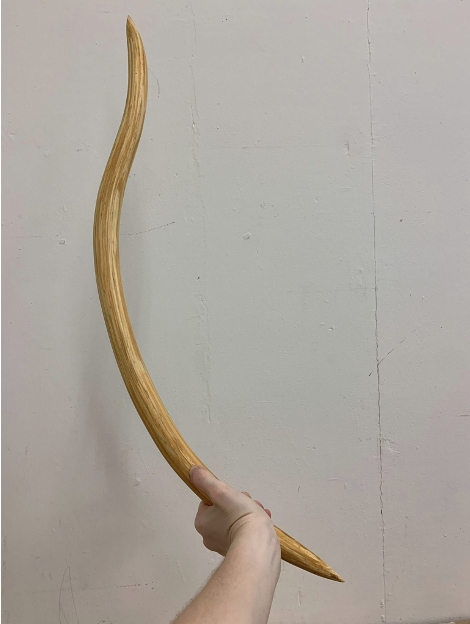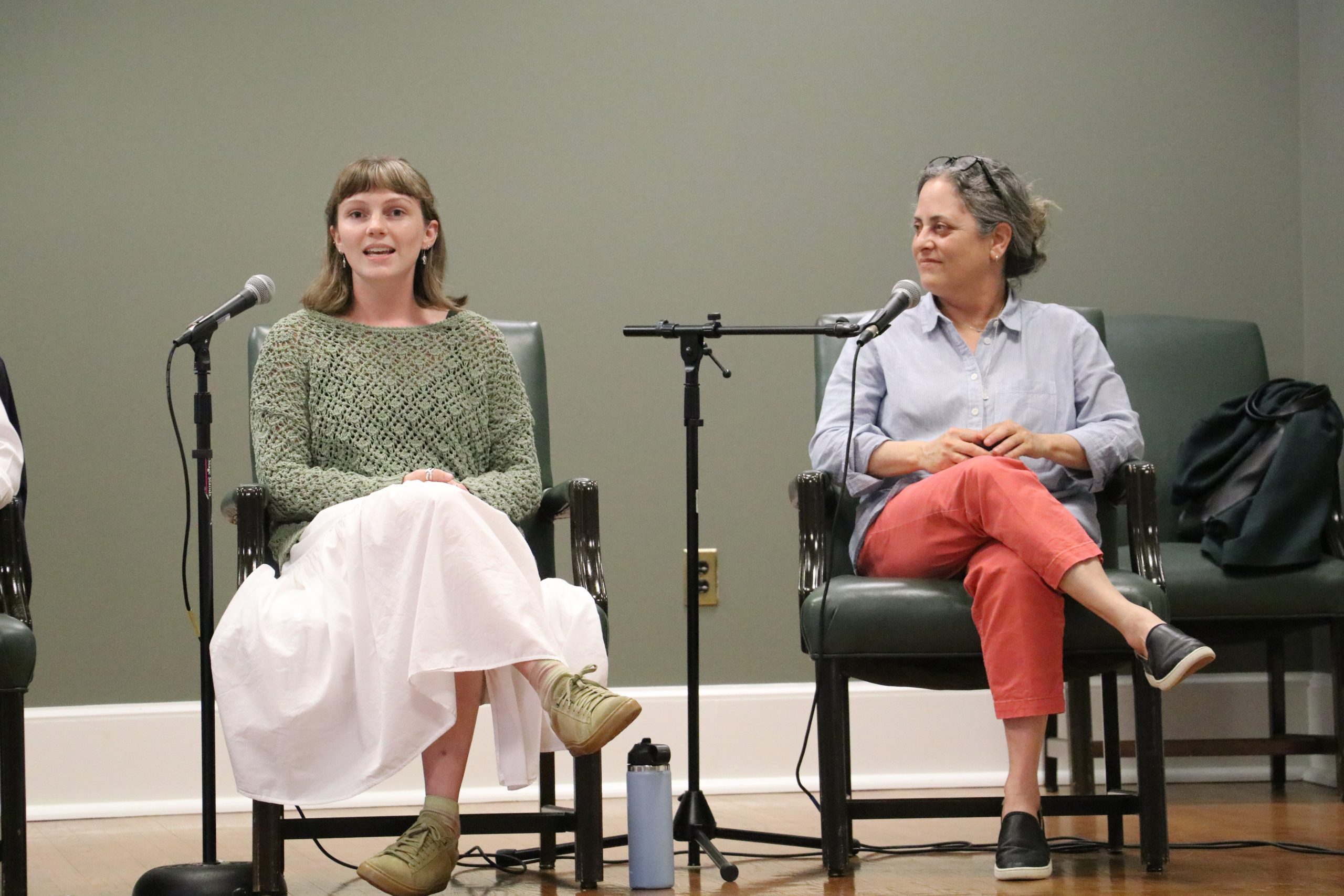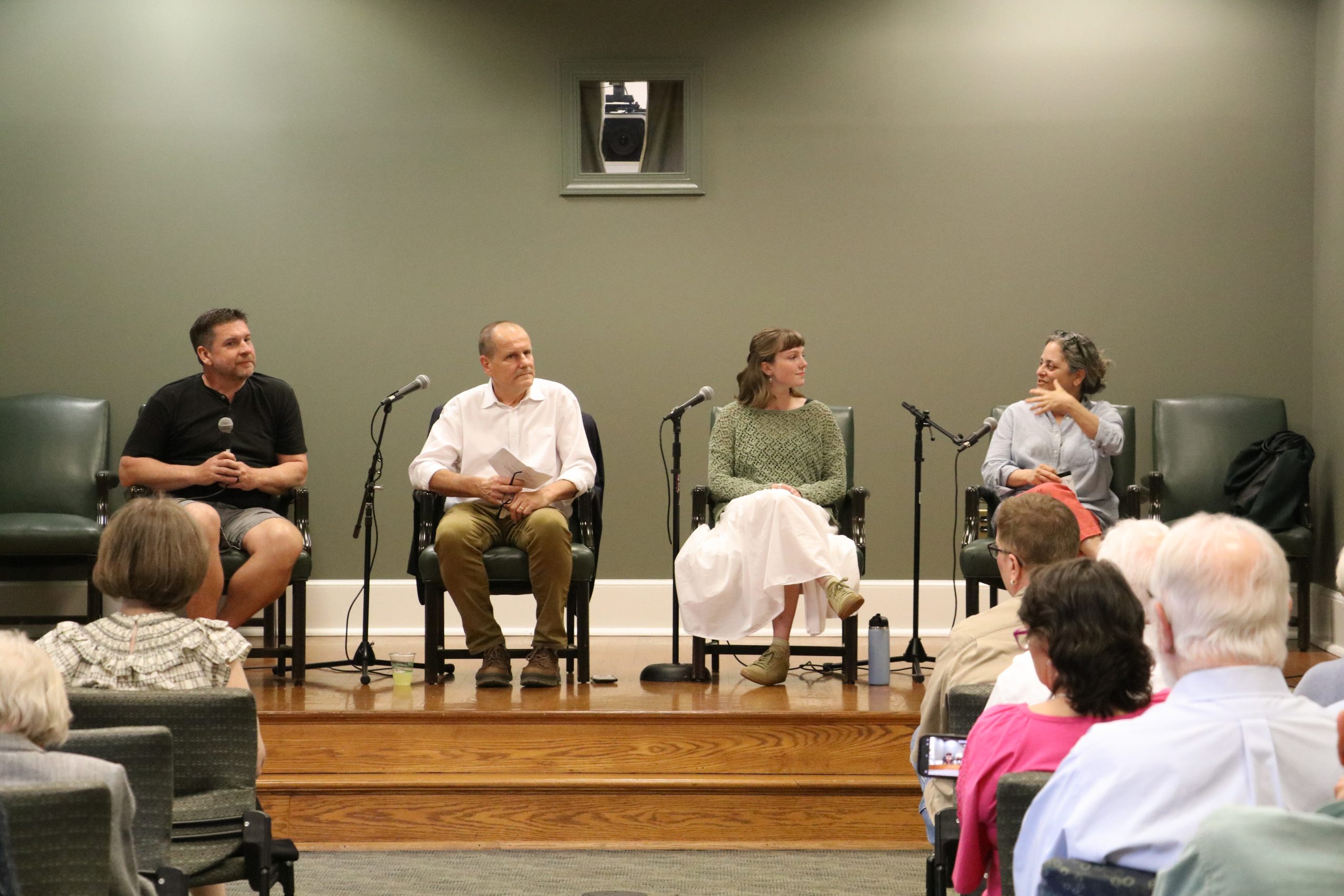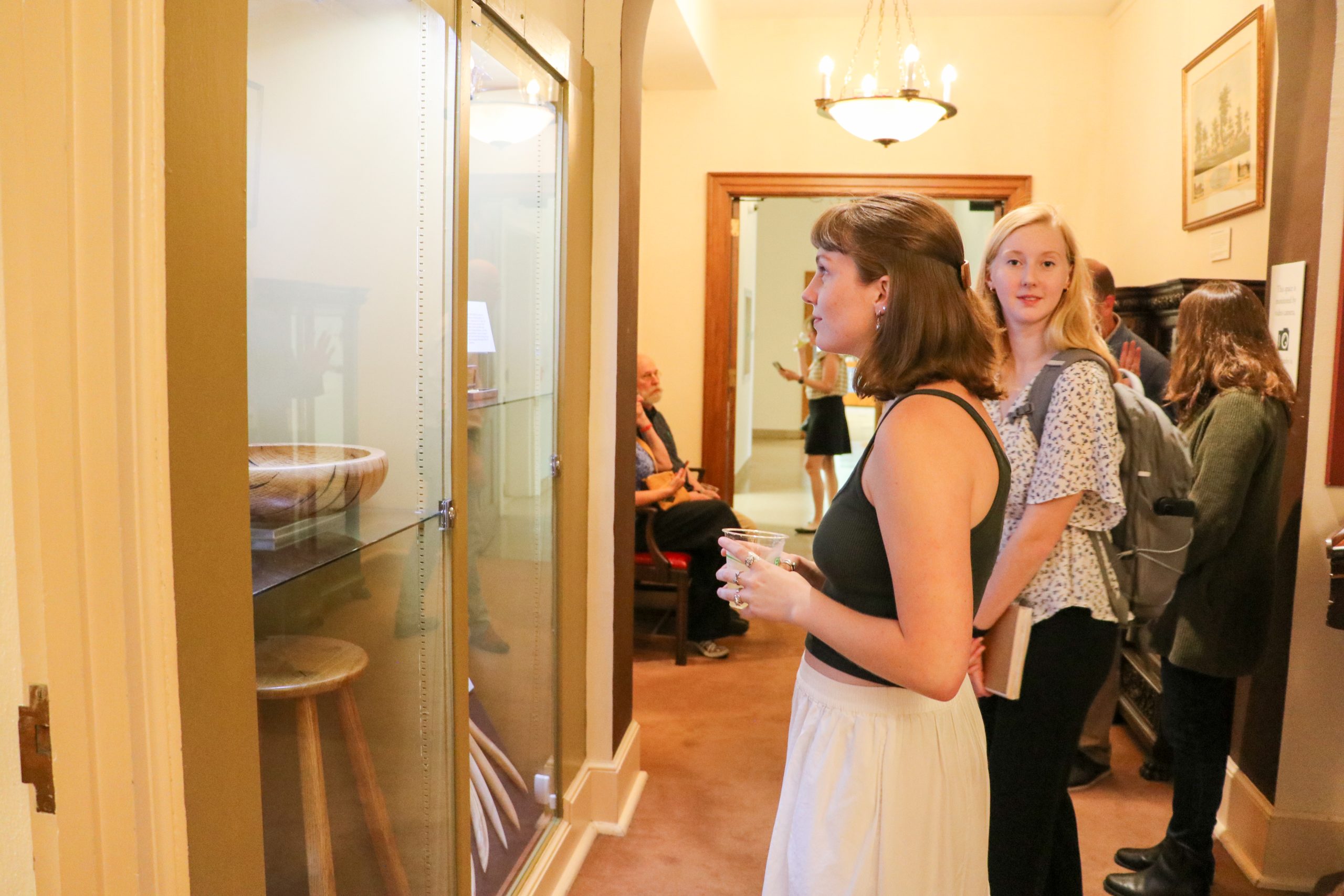Giving a second life to campus trees through sculpture
May 3, 2024
University of North Carolina at Chapel Hill junior Sarah Dean narrates her experience as an artist and environmentalist at the Second Life of Campus Trees exhibition opening and panel discussion on April 15, 2024.
Nearly five months ago, I received an unexpected email from my former wood sculpture professor asking me if I’d like to speak on a panel titled “A Second Life of Campus Trees.” On the panel, I’d have the opportunity to discuss my relationship to campus trees as both an environmentalist and artist — wow! I was immediately thrilled at the opportunity to speak about something I’m passionate about alongside other tree-oriented individuals.
When Professor Jim Hirschfield asked me to speak on the panel, I knew I was a great fit in the group because of my work with fallen campus trees. Plus, I study environmental studies and studio art, so my perspective on the subject matter takes a dual approach. When he told me I’d be the only student representative among the group, I initially felt intimidated. Though, as I got to know my fellow panelists and discussed the subject matter with them, my worries fell away. Susan Cohen, D.J. Fedor, Stephan Moll, and Tom Bythell are all doing incredible work with campus trees, and I was honored to speak alongside them.
- Susan Cohen is the associate director for the Institute for the Environment, and member of the Carolina Tree Heritage program.
- D.J. Fedor is the technical supervisor at UNC’s Be A Maker (BeAM) makerspace.
- Stephan Moll is a professor of medicine and a community artist.
- Tom Bythell is the University’s arborist. He moderated the panel.
My first experience working with campus trees came in the spring of 2022 while I was taking Wood Sculpture. Jim Hirschfield, a professor of studio art, works with the Carolina Tree Heritage each semester to acquire salvaged wood for students, like myself, to use in his sculpture class. Students use this wood for his étude project. An étude typically describes exercises musicians play to improve technique. However, in the context of the Wood Sculpture course, the étude helps students develop technical skills and utilize nearly every tool in the woodshop.
As an artistic medium, I was first drawn to wood because of its beauty. I’ve always loved its natural grain and variations. Wood has an undeniable pathos, drawing up emotion and memory within the viewer, making it a particularly appealing medium for artists like myself whose work often focuses on memory and nostalgia. As I worked on my étude, I couldn’t help but wonder where the tree had come from — what its story was. Questions like this made me interrogate my own narrative and consider what has shaped me into the woman I am today. Grappling with these questions, I decided to make myself a memory box.
To make the memory box, I used a slab of pine that came from the Carolina Tree Heritage. It felt serendipitous that my class had been given pine, since pine trees were an important part of my childhood. I grew up looking at their crowns, accidentally stepping on their pinecones barefoot, and raking up their needles. As I made my memory box with salvaged pine from UNC’s campus, I grappled with my past, where I was at the time, and where I hoped my future would take me. It was a highly introspective experience, and I wouldn’t have had that opportunity for reflection had I been working with another medium.


During the panel discussion, I had the opportunity to share my personal background with the audience. Each of the panelists explained their unique work with campus trees and expressed what drew them to the work. Moll takes an artistic approach, turning the wood into bowls, vases, and other beautiful works on his lathe. Fedor works with campus trees through UNC’s Be A Maker (BeAM) program, making pens out of wood from the iconic Davie Poplar. Cohen explained that she approaches campus trees from a forestry perspective, which her educational background is in.
“There’s no limit to the usefulness of trees to us as a society. There are people practicing forestry at Carolina, but it’s not a forestry place — it’s nice to get together with people who have a great love of trees,” Cohen said during the panel.
Fedor is one of few who has permission to work with wood from the historic Davie Poplar’s fallen or removed branches. Legend says that in the summer of 1792, William Davie had a pleasant lunch under the poplar tree and as a result chose to build the university on this site. A secondary component to the legend is that as long as the Davie Poplar remains standing, the university will thrive. If the tree falls, the university will crumble with it. As a result of these legends, wood from the tree is highly coveted. Fedor has received special permission from the university to make pens and box sets out of Davie Poplar to give to university donors. The pens and box sets are all made at the BeAM space on campus by student employees.
Trees are an integral part of UNC’s landscape to students, faculty, and visitors alike. They shape and define the fabric of our university, communicating its complex narrative while bearing witness to current events. This panel sought to call attention to the value of campus trees, while highlighting artistic works which communicate their significance. In addition to the panel, “A Second Life of Campus Trees” art gallery can be found in the North Carolina Collection Gallery in Wilson Library through the summer of 2024.
If you have questions about the exhibit, reach out to Christian Edwards at cede@email.unc.edu or Linda Jacobson at ljacobso@email.unc.edu.
See more photos from opening night of the exhibit and panel discussion on our Flickr.
Story by Sarah Dean
Sarah Dean is a junior at UNC- Chapel Hill who is studying environmental studies and studio art. She is currently working as a communications intern with the Institute for the Environment. Additionally, she is the service coordinator for Alpha Phi Omega, UNC’s gender-inclusive community service fraternity. She hopes to pursue a career at the intersection of sustainability and design.



